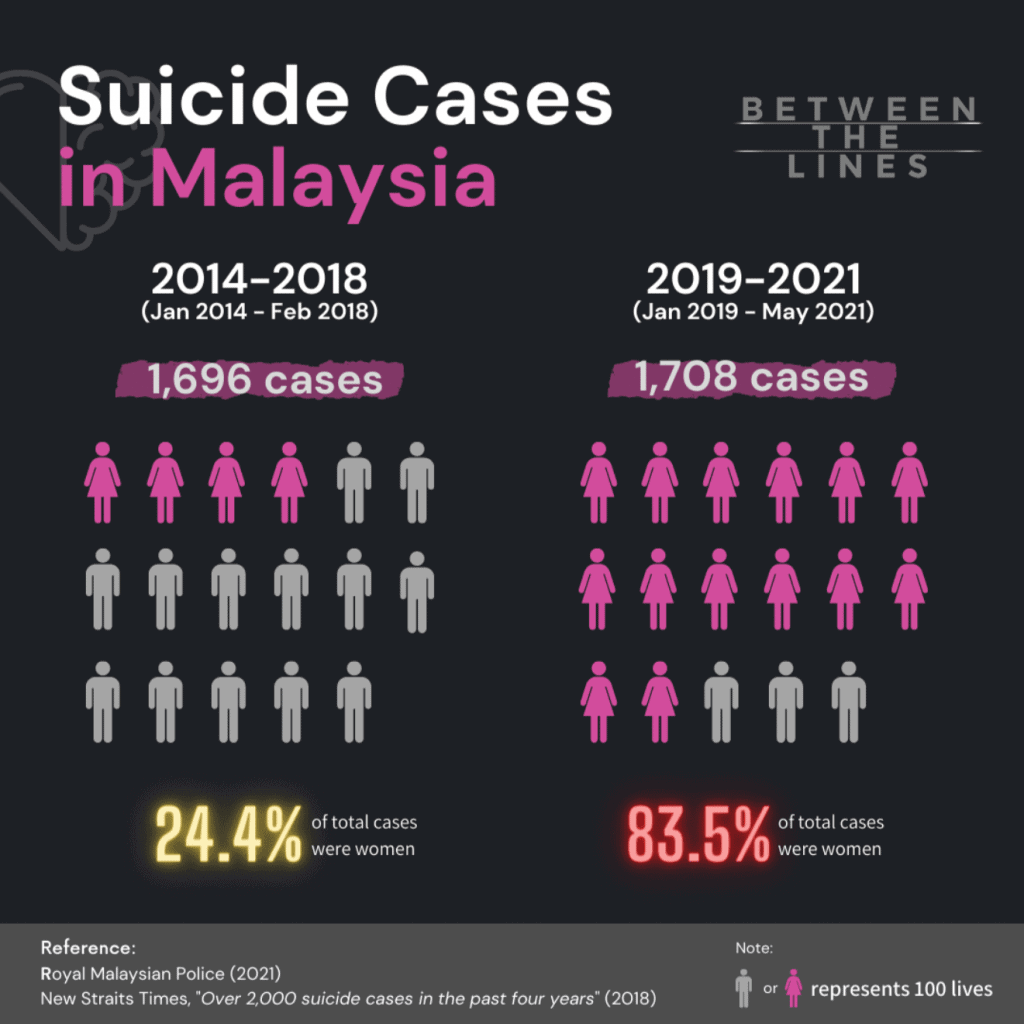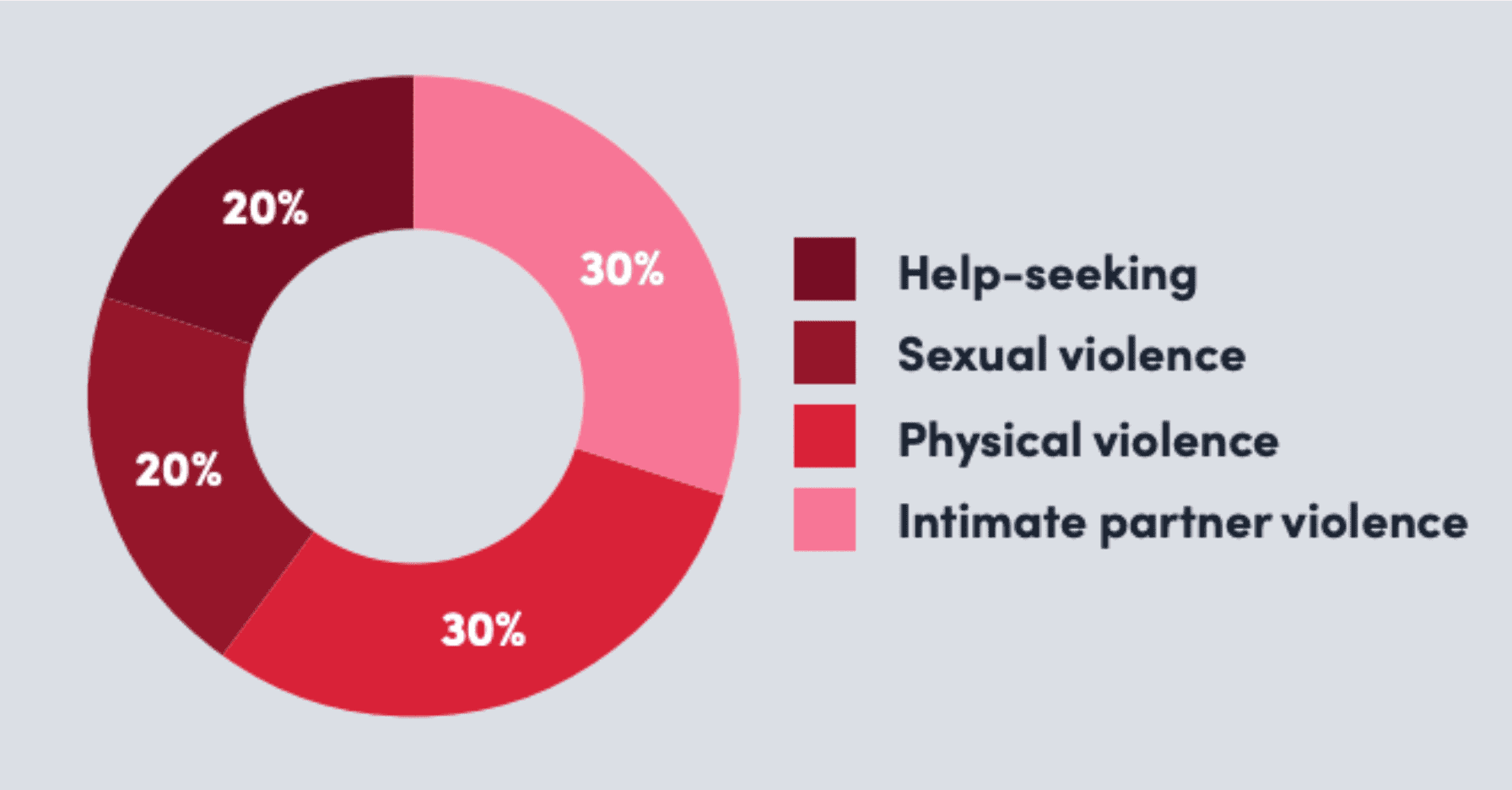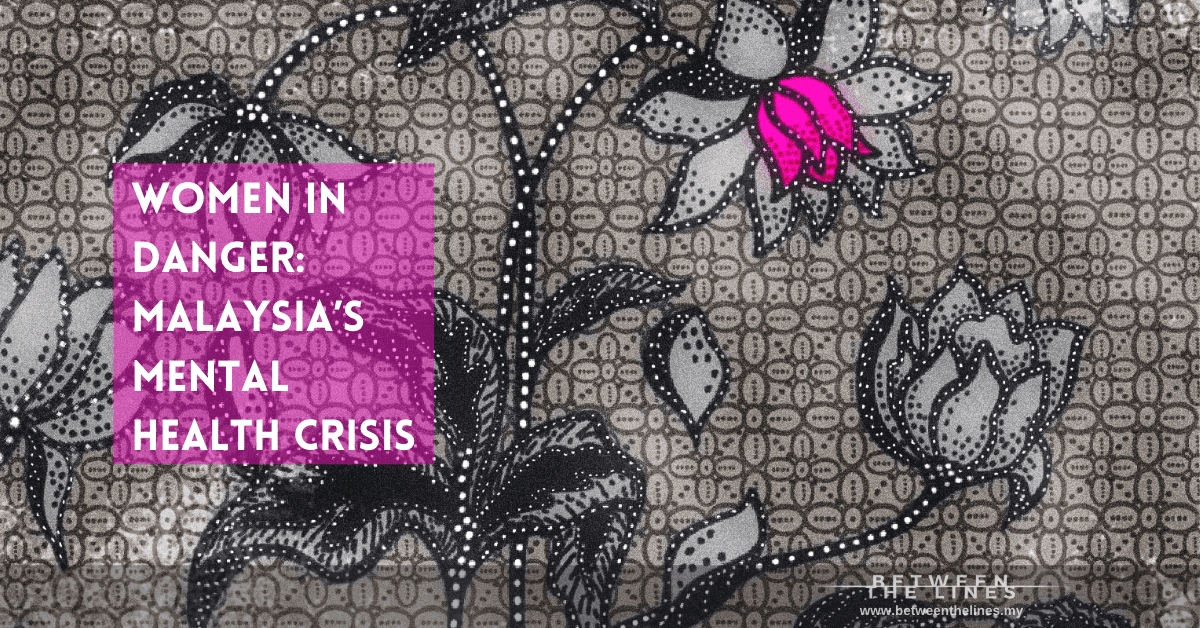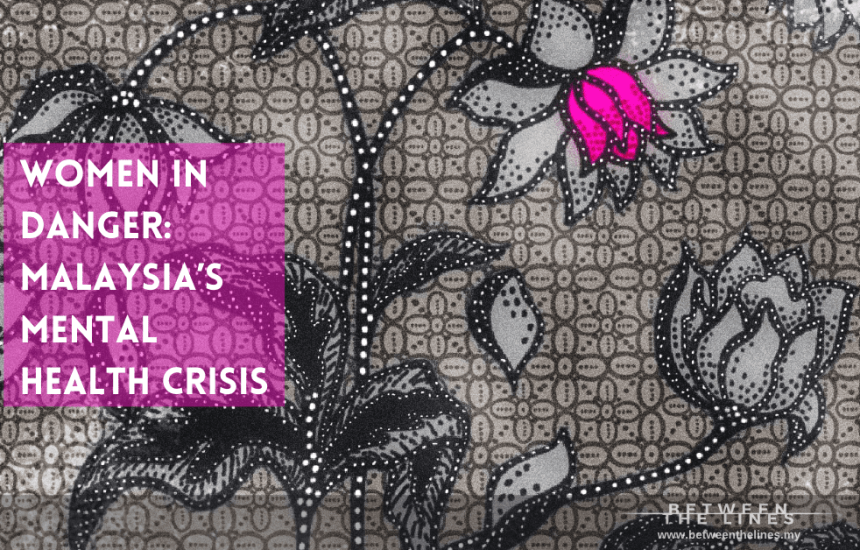Amidst a protracted pandemic, an increasing number of Malaysians have been driven to despair and suicide, up to an average of 2 people a day. This mental health crisis began long before Covid-19 hit our shores, but recent data reveals that more women are killing themselves than men. NORMAN GOH investigates.
Get daily morning briefs on Malaysian news with our Between The Lines newsletter!
The woman on the line was inconsolable.
She’d just sent her eldest child, only 11-years-old, to live with her sister in the hopes he would receive better care and attention than what he could receive in his own home.
It was, she told the volunteer, all she could do to care for her other children, husband and in-laws, whose burden of care fell solely on her shoulders. Money, too, was becoming a problem.
She didn’t know how much more of this she could take.
“She was struggling very badly,” recalls the volunteer manning the help hotline.
This is just one of the thousands of calls from women received by non-profit groups like the Women’s Aid Organisation (WAO) and All Women’s Action Society (Awam) since the Covid-19 pandemic began close to 2 years ago.
Some of the women who called spoke of other fears. Fears of isolation or of losing loved ones to the virus. Fears of a spouse’s wrathful hand. Fears of neglect, or even fears of lost income. Some feared they’d be driven to take their own lives.
It’s no secret that the drawn-out pandemic and resulting lockdowns have led to Malaysia experiencing a mental health crisis like never before, especially among vulnerable groups, including women.
Although distressing, it was hardly a surprise when official data revealed an increase in suicide cases across the country.
Suicides in Malaysia
As revealed by the police in July, 1,708 suicides were logged between Jan 2019 and May 2021, already surpassing the number of cases reported during a 4-year period between 2014 and 2018.
What did shock many was the revelation that disproportionately more women in the country were taking their own lives than men.
According to police, 1,427 — a whopping 83.5% — of the 2019 – 2021 cases involved women. That’s 5 times the numbers of cases involving men.

Mental health, and by extension suicide, is a complex and sensitive issue. Yet, this gender shift in suicide rates over the last two years seem to buck the national and global pattern, which shows that while women were more likely to be diagnosed with depression and more likely to attempt suicide, men were more likely to die by their own hands.
Even so, is the latest police data all that surprising?
Internationally, the gender trend is already narrowing. In a 2019 US study, an 8% increase in suicide rates for girls aged 15 to 19 years old had been seen annually since 2007.
Back home, the 2017 National Health and Morbidity Survey (NHMS) showed that whilst suicide rates were indeed higher in boys than girls aged 13 to 17, the difference was only 0.1%.
Could long-standing challenges and increasing pressure on women, heightened by the pandemic, be behind this? Between The Lines (BTL) looks at the factors that could be driving these unfortunate numbers.
Get daily morning briefs on Malaysian news with our Between The Lines newsletter!
No escape from violence
Covid-19 brought about a greater level of stress, depression, fear, anxiety and loneliness.”
- United Nations (UN) Women
A study on the gendered effect of Covid conducted by UN Women during the 1st quarter of 2020 indicated the pandemic was affecting the mental health of 66% of Asian women, compared to 58% of men. It estimated this percentage would have increased as the pandemic progressed.
In Malaysia, a nationwide study by peer-reviewed research site PLOS, found a “higher prevalence” of or “elevated” Covid-related depressive, anxiety, and stress symptoms in women.
Experts tell BTL these findings could suggest more severe distress and exacerbation of existing risk factors, including financial concerns and gender-based violence (GBV) – all factors likely to contribute to the worsening mental health of women in Malaysia.
What is Gender-Based Violence?
- Gender-based violence, or GBV, refers to harmful acts perpetrated against a person based on their gender.
- It is rooted in the exploitation of gender and power inequality, and harmful socially determined roles.
- It leads to sexual, physical and mental abuse and/or threats of such acts.
- Anyone can be affected, regardless of age, gender, biological sex and/or background
- However, it’s estimated that 1 in 3 women will experience abuse in their lifetime.
- Incidences of GBV increase during times of crisis
*Source UNHCR, Awam
In the case of GBV, this was visible in rising cases of domestic and online violence, including cyberbullying, during the pandemic.
Similar rises around the world have gotten so severe that it’s being dubbed the “shadow pandemic”.
For context, Malaysian police recorded 4,110 domestic abuse cases from the start of the pandemic in March 2020 to last Dec, which is an average of 411 cases a month, or 13 a day. The number of reports from Jan – Aug 2021? 4,905 cases. That’s an average of 613 cases a month or 20 a day.
The WAO’s helpline has seen a fourfold spike in calls reporting domestic violence since the start of the first movement control order (MCO) in March last year.
“There is a huge amount of stress particularly for teenage girls and young women who may be in hostile situations…as well as single mothers who have to fend for themselves and their families,” Abinaya Mohan, WAO’s head of campaigns, informs BTL.
But here’s what’s worse: these numbers could be so much higher.
Authorities and women’s groups both repeatedly point out a disturbing reality for many abuse survivors — being unable to seek help.
Such a task is near impossible when survivors are confined in the same house or work quarters (as in the case of female migrant workers) as their abusers during the many lockdowns over the past year-plus.
As such, these survivors are often left to suffer alone and in silence.
This is best reflected in a study of big data by UN Women that analysed and compared search trends on social media and search engines in Asia, before and during the health crisis. It noted that “different degrees of controlling behaviours by abusers may be affecting women’s ability to seek help online.”
Online searches related to violence against women
Oct 2019 - Sept 2020

*Based on data on Bangladesh, India, Indonesia, Malaysia, Nepal, Thailand, the Philippines and Singapore
The analysis found that searches related to domestic violence — for terms such as “physical abuse signs”, “violent relationships”, “cover bruises on face”, “spouse abuse,” and “controlling husband” — grew 47% in Malaysia from Oct 2019 to Sept 2020.
More disturbing still, the study noted that searches for help-seeking phrases such as “domestic violence hotline”, “sexual assault lawyer,” or “sexual abuse counselling” rose by 70%. In fact, of the 8 countries monitored, Malaysia recorded the highest increase.
The UN also expressed fear that sexual abuse was on the rise here, as “rape, sexual assault and abuse” emerged as the “dominant” topic cluster being searched for in Malaysia.
Money matters
The old adage best describes the problem that 'when money is scarce at home, love flies out of the window'. Suddenly women are left to figure this problem out for themselves, especially the single parent, the sole breadwinner and the ones who are fighting alone.”
- Dr Joanne Lim, University of Nottingham Malaysia
Underlying issues of women suicide goes well beyond VAWG-related (violence against women and girls) concerns.
Speaking about the country’s suicide rate in July, police Criminal Investigation Department director Abd Jalil Hassan had outlined several contributing factors — among them, financial constraints.
As noted by UN Women, this gender gap has only escalated during the past year and a half as the pandemic takes an increasing economic toll.
According to the UN’s findings, women’s economic resources were the hardest hit in Asia during this time.
61% of women saw decreases in savings and investments, 66% saw a drop in remittances, and 50% saw shrinking earnings due to loss of work or paid hours. In every instance, the drops were more than what men suffered.
Sometimes, the burden of reduced or lost income was two-fold as some women are the sole breadwinners in their families.
Batu Kawan MP Kasthuri Patto says more granular data for reported suicide numbers is needed to provide a clearer understanding of the situation these women faced.
For example, how many of these women were married? What happened to their spouses? Of single mothers, how many were left by their husbands or widowed?
In many of these cases, financial aid only offers temporary relief.
She says these women are often neglected by financial institutions, while government policies that champion women economically are far and few between.
“They (single mothers) could be the ones running the show in the family, and when you have this kind of a situation, you have no way to go and get help,” says Kasthuri.
“Assistance is often nowhere to be found.”
Similarly, Dr Joanne Lim, deputy dean of the Faculty of Arts and Social Sciences of the University of Nottingham Malaysia explains that many are at risk and exposed to street finance peddlers such as loan sharks.
Suppressed voices
...When it comes to the wellbeing of Malaysia’s women and girls, global studies are already showing that Covid-19 could set back gender equality gains by a generation.”
- United Nations Population Fund (UNFPA)
It’s not just the lack of security and economic support that’s widening the gender disparity in the country and leaving women in a terrible state.
The recent repression of civil liberties in the country, which began at the start of the pandemic, has had a muffling effect on women empowerment.
In fact, Malaysia ranked very poorly in tracking carried out by New Zealand-based Human Rights Measurement Initiative (HRMI) in areas such as respect for citizens’ freedom of speech, assembly and association, and democratic rights.
With a score of just 3.7 out of 10, Malaysia performed “worse than average on empowerment rights” among 36 countries sampled between 2019 – 2020.
How does this relate to women? Because the HRMI noted that women, girls, and single-parent families are among those most at risk of having these rights “violated”.
This, according to Thalia Kehoe Rowden, Strategy and Communication Lead of HRMI, is a huge problem when those being targeted include activists fighting for women’s rights and championing women’s causes.
She says: “You can’t argue for your rights if you’re not being allowed to speak.”
And this stifling of the female voice isn’t just seen in homes.
In government and policy-influencing capacities, women make up just 12.9% of the current cabinet and 38.2% of decision-making positions in public agencies in Malaysia.
Even in Parliament, women comprise a mere 15% in the lower and upper houses respectively.
Is it surprising then, and as Kasthuri has previously lamented, the chance to raise issues related to women, their mental health, and suicides is scarce in the House?
Trapped within patriarchy
As we delve deeper into understanding the larger incidences of suicides involving women, we cannot deny the glaring problems within patriarchal society.
Dr Sankari Ganesh, a senior psychiatrist at Permai Hospital, a mental health institute in Johor Bahru, tells BTL there’s been a noticeable increase in the number of people being referred for self-harm, attempted suicide and depression.
This includes adolescents and, of course, women. And what are the reasons? The disproportionate burden of care and responsibility placed on them at home during lockdowns.
This is when women are forced to spend more hours handling domestic work and taking care of children and dependents during the pandemic, including in cases where their spouses are unable to work or are working from home.
“We are going through a very difficult time with both (men and women) feeling it…Now, there are more people at home. There’s a lot of tension going around with kids being at home. Unfortunately in Malaysia, women are still the ones predominantly in charge of the kids.
“All this amounts to increased stress. (In this case,) when you get a lot of stress, you have no one to vent to,” Sankari says.
Sadly, as signs of mental illness aren’t always visible, many affected women lack the necessary support.
“Mental health is…an emotional burden. Things that you cannot show to people and unless you’re ready to voice it out or it has come to a point of breakdown, it’s often overlooked,” Sankari adds.
Get daily morning briefs on Malaysian news with our Between The Lines newsletter!
So what now?
You need to be empowered with knowledge.” Subang Jaya Assemblyperson
- Michelle Ng
Women’s group Awam opines that help-seeking behaviour will not be fully enabled without decriminalising attempted suicides.
Currently, Section 309 of the Penal Code stipulates that a person attempting to take their own life is liable to a jail term of up to 1 year, or a fine, or both.
Thankfully, in a motion initiated by the previous Pakatan Harapan administration before its collapse, the new cabinet in October agreed to begin the decriminalisation process.
There have also been calls to revive the National Suicide Registry (NSRM) and facilitate long-term strategies to tackle the problem.
The NSRM was first launched in 2007 to provide the public with access to data on suicide but ceased operating in 2009.
Meanwhile, Lim, the academic, says the current predicament is an extension of long-drawn problems affecting women in Malaysia.
“Perhaps the government should revisit and re-examine the country’s mental health policy to address contemporary needs.” The policy was established in 1998 and last reviewed in 2011.
Note, however, that, this year, the Health Ministry has launched the 5-year National Strategic Plan for Mental Health.
For example, in light of the economic hardships faced by many women and their families during the pandemic (see above), Lim says financial support for mental healthcare is much needed.
Lim said income tax relief and medical and welfare assistance would help families coping with mental illness. “In that vein, social security like Socso can also be prompted to offer assistance to contributors who declare a mental illness.”
Incidentally, hardly any insurance agencies in Malaysia provide any coverage for personal mental healthcare except for AIA who made the announcement in 2019 to extend coverage to mental health services.
It would seem the government has listened to some extent.
In his recent Budget 2022 tabling speech, Finance Minister Tengku Zafrul Tengku Abdul Aziz acknowledged the factors driving the worsening mental health crisis in the country. He said: “This pandemic crisis has worsened the livelihoods; domestic violence issues and depression to the point of being the root cause of the issue.”
As such, the budget included an RM70 million allocation to boost mental health support, including counselling and psychosocial services, advocacy programmes and possible tax relief.
At the same time, Subang Jaya Assemblyperson Michelle Ng points to the need for policymakers to start identifying the key entry points where many people begin facing mental health challenges for the first time.
This, coupled with more resources — the number of psychiatrists and clinical psychologists in public healthcare are far from enough — could help those who are suffering.
“Many of them (victims) don’t know where to turn…While people have gone past the stigma and realise now how big a problem it is, there is a need to empower them (to seek help).
“You can’t just give people a list of numbers…You can’t just chuck someone an oxygen tank and expect them to know what to do when someone gets a stroke for example.”
Editor’s note: BTL attempted to contact the Royal Malaysian Police as well as the Women, Family and Community Development Minister for comments. None have responded as at time of publication

Norman Goh is a political reporter and podcast producer based in Kuala Lumpur.







